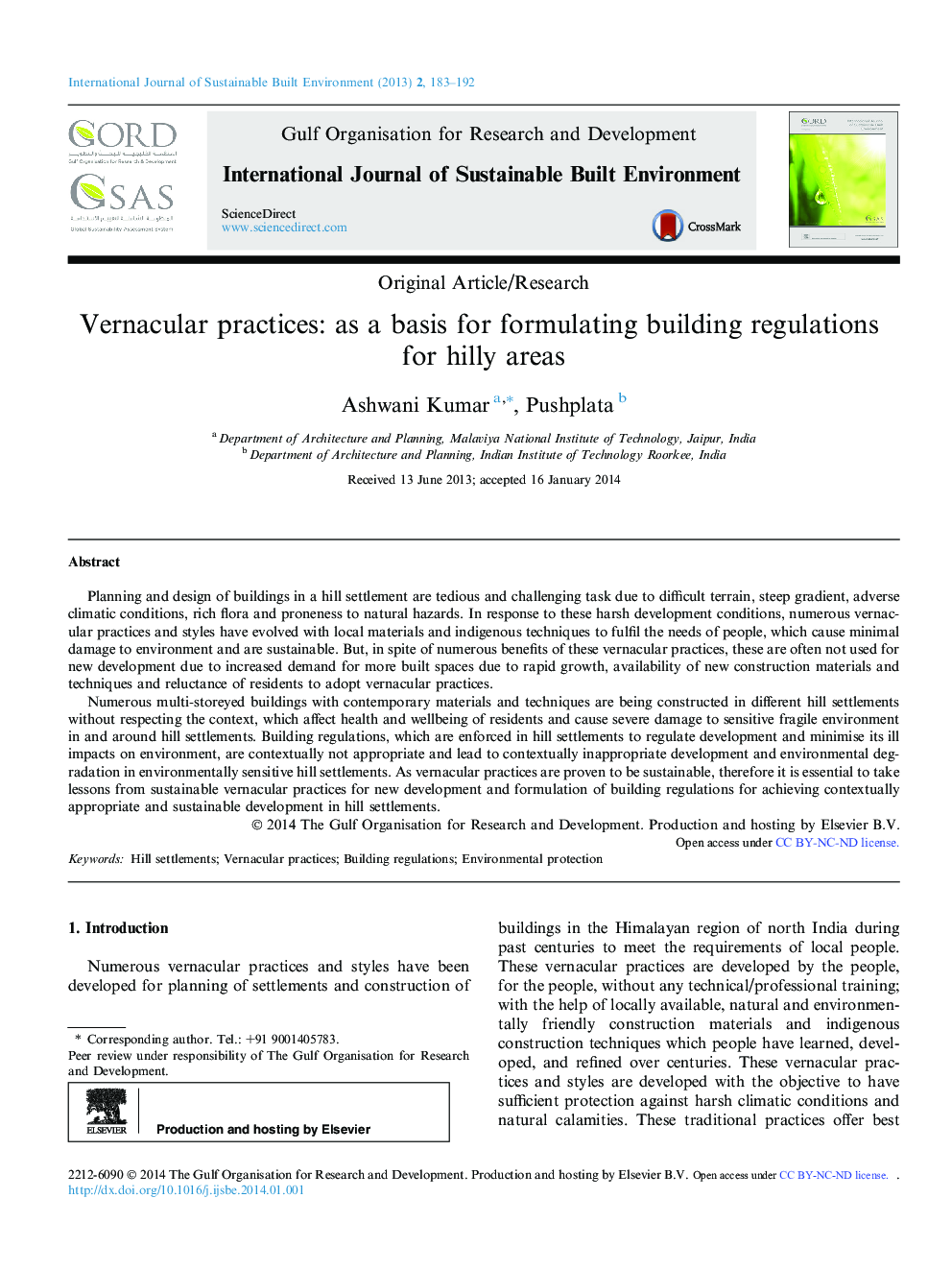| Article ID | Journal | Published Year | Pages | File Type |
|---|---|---|---|---|
| 214806 | International Journal of Sustainable Built Environment | 2013 | 10 Pages |
Planning and design of buildings in a hill settlement are tedious and challenging task due to difficult terrain, steep gradient, adverse climatic conditions, rich flora and proneness to natural hazards. In response to these harsh development conditions, numerous vernacular practices and styles have evolved with local materials and indigenous techniques to fulfil the needs of people, which cause minimal damage to environment and are sustainable. But, in spite of numerous benefits of these vernacular practices, these are often not used for new development due to increased demand for more built spaces due to rapid growth, availability of new construction materials and techniques and reluctance of residents to adopt vernacular practices.Numerous multi-storeyed buildings with contemporary materials and techniques are being constructed in different hill settlements without respecting the context, which affect health and wellbeing of residents and cause severe damage to sensitive fragile environment in and around hill settlements. Building regulations, which are enforced in hill settlements to regulate development and minimise its ill impacts on environment, are contextually not appropriate and lead to contextually inappropriate development and environmental degradation in environmentally sensitive hill settlements. As vernacular practices are proven to be sustainable, therefore it is essential to take lessons from sustainable vernacular practices for new development and formulation of building regulations for achieving contextually appropriate and sustainable development in hill settlements.
